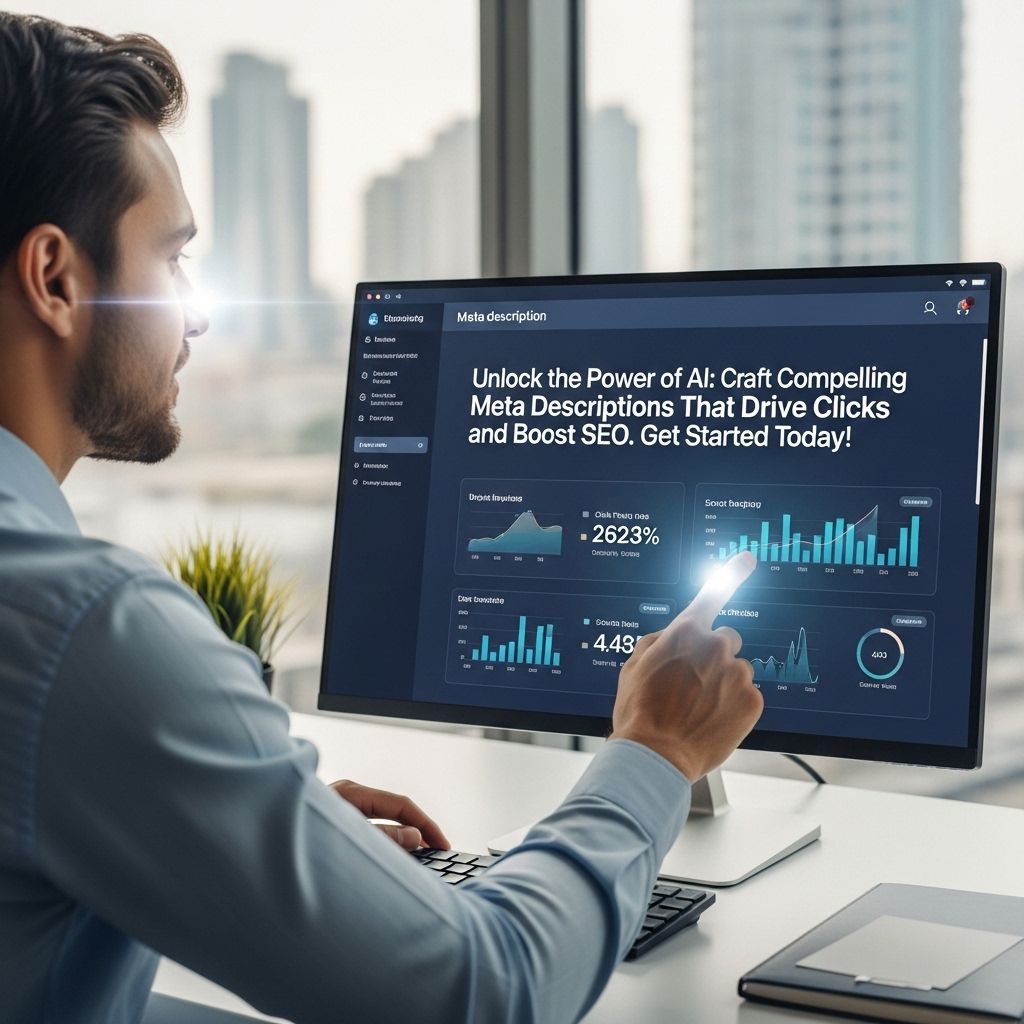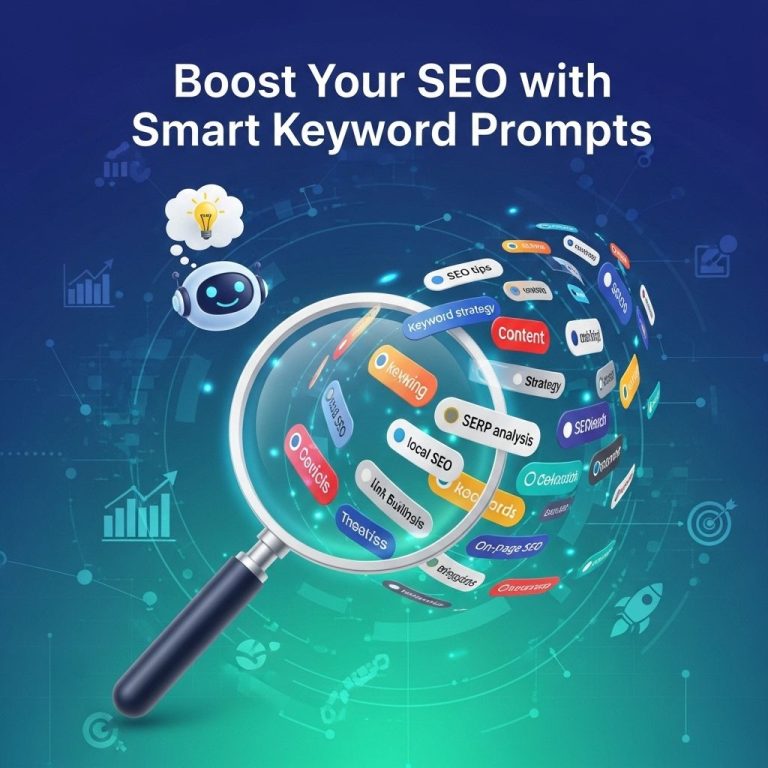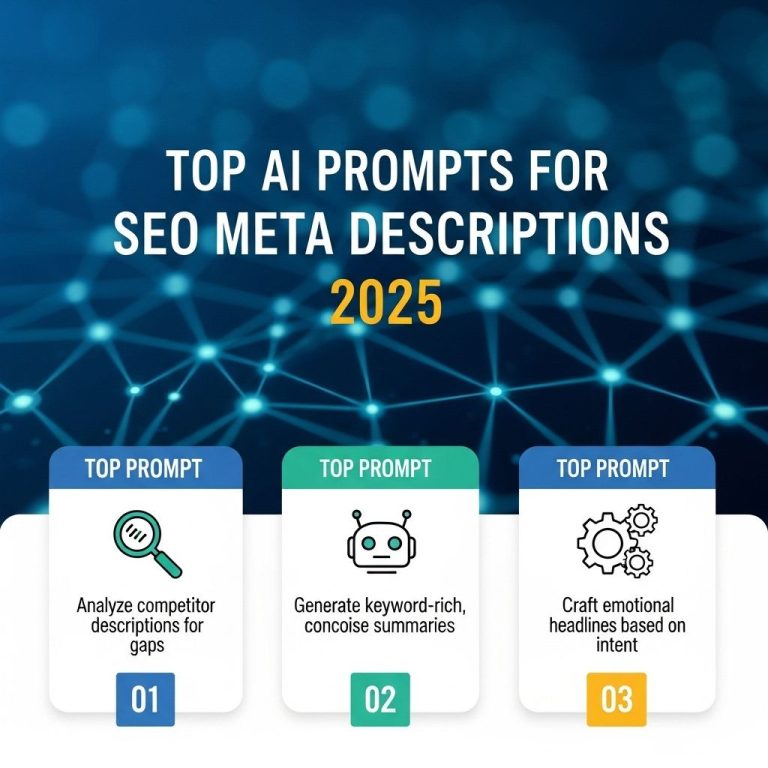In the digital age, where attention spans are shorter than ever, crafting a captivating meta description is essential for any online content. A well-written meta description not only serves as a brief summary of your page but also acts as a marketing tool that can influence click-through rates. As artificial intelligence (AI) technologies advance, leveraging these tools to optimize your meta descriptions can provide a significant edge. This article delves into the nuances of creating effective meta descriptions using AI, offering practical tips and examples.
Understanding the Role of Meta Descriptions
Meta descriptions are HTML attributes that provide concise explanations of the contents of web pages. While they don’t directly affect search engine rankings, they play a pivotal role in how search results are displayed.
Why Meta Descriptions Matter
- First Impressions: They are often the first interaction users have with your content.
- Improved Click-Through Rates: A compelling meta description can boost the likelihood that users will click on your link instead of others.
- Keyword Relevance: Including relevant keywords can increase visibility in search results.
How AI Can Enhance Your Meta Descriptions
AI tools can analyze vast amounts of data to help create meta descriptions that resonate with your target audience. Here’s how they can help:
Data-Driven Insights
AI algorithms can evaluate successful meta descriptions across multiple platforms and industries. By analyzing patterns, they can identify effective language, tone, and structure.
Content Generation
AI content generators can produce tailored meta descriptions based on your content’s context and target audience, saving time and effort. However, a human touch is still necessary to ensure relevancy and accuracy.
Best Practices for Writing Meta Descriptions
Even with AI assistance, certain best practices should be followed to maximize the effectiveness of your meta descriptions:
1. Keep it Concise
Avoid exceeding 155-160 characters to ensure the entire description is visible in search results.
2. Use Active Voice
Active voice makes your descriptions more engaging and encourages user action.
3. Include a Call to Action
Entice users to click by incorporating phrases like:
- “Learn more about…”
- “Discover how to…”
- “Get started with…”
4. Be Accurate and Relevant
Ensure that your meta description accurately reflects the content of the page, as misleading descriptions can lead to high bounce rates.
5. Experiment with Keywords
Use relevant keywords but avoid keyword stuffing. Aim for a natural flow in the description.
Utilizing AI Tools for Meta Descriptions
Several AI-based tools can aid in generating effective meta descriptions. Here’s a comparative look at some popular options:
| Tool | Features | Pricing |
|---|---|---|
| Copy.ai | AI-powered writing assistant, customizable templates | Starts at $35/month |
| Writesonic | Generates SEO-focused content, integrates with Google Search | Starts at $15/month |
| Jasper | Collaborative writing interface, supports multiple languages | Starts at $49/month |
Case Studies: Success with AI-Driven Meta Descriptions
Here are a few case studies illustrating how companies successfully implemented AI-generated meta descriptions:
Case Study 1: E-commerce Website
An online retailer utilized AI to create meta descriptions for their product pages. By analyzing data from top competitors, they generated descriptions that highlighted unique selling points. As a result, they observed a 20% increase in click-through rates within three months.
Case Study 2: Blogging Platform
A blogging platform employed AI tools to refine their meta descriptions based on user engagement metrics. The adjustments led to a 30% increase in organic traffic over six months, proving the importance of continuous optimization.
Integrating AI into Your Workflow
To successfully incorporate AI into your meta description crafting process, consider the following steps:
- Identify Your Objectives: Determine what you want to achieve with your meta descriptions.
- Select the Right Tool: Choose an AI tool that fits your needs and budget.
- Train the AI: Provide the tool with relevant input and examples.
- Review and Edit: Always review AI-generated content to ensure it aligns with your brand voice and goals.
- Monitor Performance: Track the performance of your meta descriptions and adjust accordingly.
Conclusion
Crafting captivating meta descriptions is a blend of art and science, enhanced significantly by the capabilities of AI. By understanding the underlying principles and utilizing the right tools, you can create compelling meta descriptions that drive traffic and engagement. The digital landscape is competitive; leveraging AI to optimize your meta descriptions can make all the difference in capturing your audience’s attention.
FAQ
What is a meta description?
A meta description is a brief summary of a webpage’s content, typically 150-160 characters long, that appears under the page title in search engine results.
Why are meta descriptions important for SEO?
Meta descriptions are crucial for SEO because they influence click-through rates by providing a compelling reason for users to visit your webpage.
How can AI help in crafting meta descriptions?
AI can analyze keywords, identify target audiences, and generate engaging and relevant meta descriptions that align with SEO best practices.
What are some tips for writing effective meta descriptions?
Include primary keywords, keep it concise, make it actionable, and ensure it accurately reflects the content of the page.
How often should I update my meta descriptions?
You should update your meta descriptions whenever you change the content of the page, or if you want to improve click-through rates based on performance data.
Can meta descriptions affect my website’s ranking?
While meta descriptions do not directly impact rankings, a well-crafted description can improve click-through rates, which can indirectly influence rankings.




